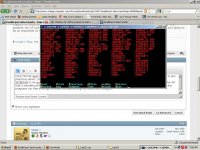I have a question...
I made connection on parallel ports from my 386 pc to XP machine(it runs all dos programs correctly) and i tested data transfer by program ZIP221. But I want my XP machine to act as server, I just power XP machine on(without monitor, keyboard... just machine) and so I can send/receive files between these two computers using only 386(like, i powered on xp and in 386 pc which has dos 6.22 i say: 1.show me directory of server - 2.receive file hello.exe 3. send file result.log).
I made connection on parallel ports from my 386 pc to XP machine(it runs all dos programs correctly) and i tested data transfer by program ZIP221. But I want my XP machine to act as server, I just power XP machine on(without monitor, keyboard... just machine) and so I can send/receive files between these two computers using only 386(like, i powered on xp and in 386 pc which has dos 6.22 i say: 1.show me directory of server - 2.receive file hello.exe 3. send file result.log).

